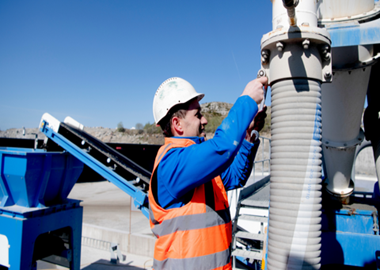Next in our series engineering insights innovation blog series, we caught up with Darren Eastwood, Business Development Director, and Chris Hillis, Head of Technical Engineering at CDE to discuss sustainability and the direction it may take in the extractives industry.
Being truly sustainable is like walking a tightrope. For years, “being sustainable” has been a proxy for being environmentally conscious, or “green”. It was a linear argument – you’re either with us or against us! And, as much as we all want to play our part in passing on a healthy planet to the next generation, there is more nuance to sustainability.
There are two sides to fall off that tightrope… on one side, you can die by overconsumption of the environment you’re in – the environmental stewardship argument. But on the other side, you can die by under consumption and a failure to achieve economic sustainability, impacting standards of living and progress of the wider population. Walking the tightrope requires a healthy balance of these two.
Kate Raworth in her book Doughnut Economics looks at this in a similar way (and a little less dramatic than my tightrope), where the balance between the economy and the environment is what we should be striving towards. A great read, highly recommended!
In the second instalment in our Innovation Series, I want to explore the direction sustainability might take for our industry, and how we can make it work for everyone.
In our community, this balance is achieved across four key pillars:
Resource Sustainability
Equipment Sustainability
Environmental Sustainability
Economic Sustainability
Thinking about how each in turn affects our sustainable balance, and how we can stay on the tightrope.
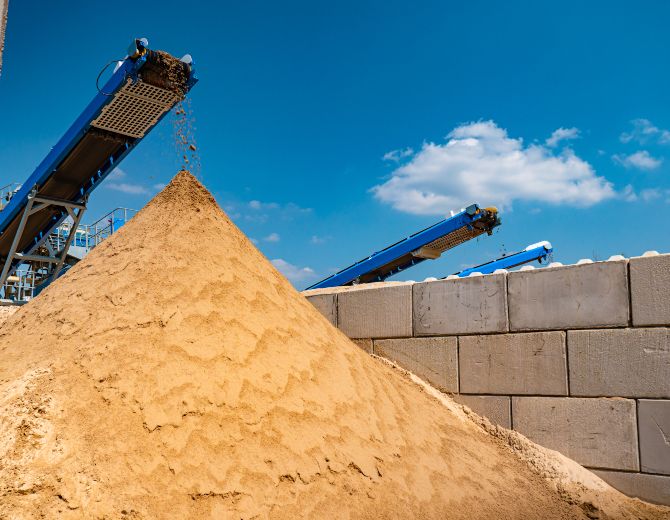
Resource Sustainability
Let’s face facts - the world isn’t making any new sand; with population growth and the rate at which we’re consuming it, it’s silently moving toward the “endangered species commodity” list. We are facing a global sand crisis. When this scenario happened within the iron ore industry, sites that were processing high grade ores, had to quickly adapt to processing low grade (dirtier) ores. And with many regions restricting legal permitting of new quarry sites, the same pinch is likely to happen with sand and aggregate production.
I caught up with Chris Hillis, CDE’s Head of Technical Engineering for his thoughts on the overlooked feed sources of potential high value sand and stone.
Here are Chris’ thoughts.
Materials that previously couldn’t be processed, now can be and this opens up the range of feed stocks that can be technically (and profitably) processed into high value sand and aggregates. This allows us to retain the highest quality virgin materials for the applications that require it – like glass sands, sports sands, specialty concrete production. Effectively letting us “save our bullets” for when we really need them and make the most of every single ton of virgin material that’s extracted.
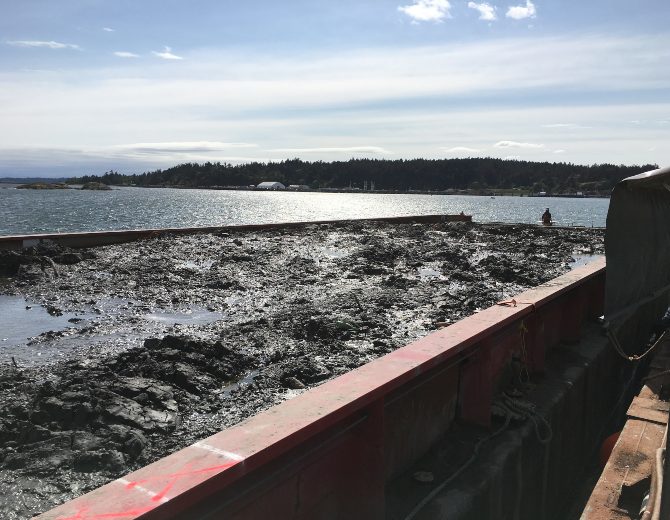
So what are these feed sources:
Overburden
Overburden piles and quarry waste have value. High clay content feed stocks with heavily agglomerated particles can still hold value as high spec products. Sand and aggregates can be scrubbed clean and unwanted fine clay can be removed. Fines content in the final sand product can even be tailored to reintroduce <#200 material to maximise the output yield whilst staying in specification.
Dredging
The inconsistency of dredge – both slurry density and gradations – can prove tricky to generate dependable outputs, and therefore consistent value. However, wet processing allows operators to split gradations, remove the unwanted, and recombine the desired to produce value.
This is also true of dredge cleaning projects, where we can find a lot more than just sand and aggregates under the water. In previous applications, recovering sand and aggregates was the foundation for a profitable business case, however, valuable ferrous/non-ferrous metals improve the commercial returns further, and recovering artifacts and archaeology can bring a positive cultural aspect to the project.
High organic contamination
Many inert feed sources have some form of organic contamination. These are often quarried deposits, but coming with naturally occurring mica, heavy sources such as lignite, or other light organics or light carbon, the ability to isolate and remove these creates value in a material where there was previously none. Organic contamination has proven extremely challenging in some parts of the world, and we expect to see legislative change being refined and imposed on those supplying construction materials.
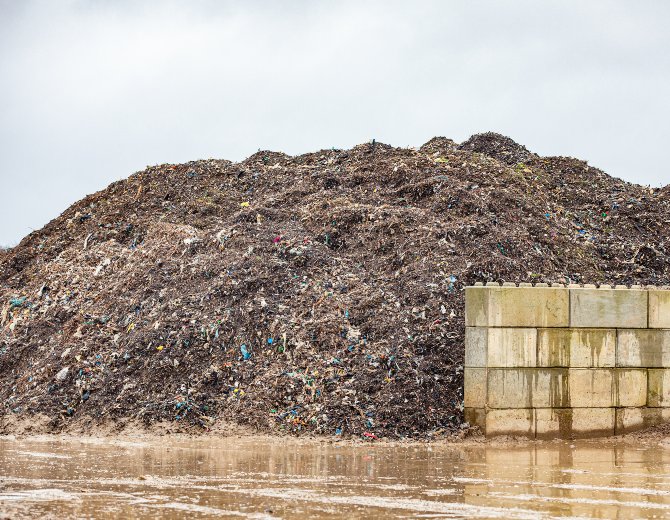
Tailings Ponds
In many regions, legacy wet processing techniques often meant (and still means) the need for tailings ponds. While safety issues around mine tailings are well documented and should be the top priority, what is perhaps less well known is that tailings also contain considerable value. More traditional techniques would not only remove fines and clay but bring the “bottom end” of the sand with it to the pond.
However, the solution ultimately reduces the need for ponds altogether, maximising the recovery of valuable material backs within the sand stockpiles, whilst efficiently dewatering the silt/clay.
Sustainable tailings management is a necessity to protect the environment and increasingly meet environmental legislation; innovative technologies and modular tailings recovery systems also make for good business sense and open up new revenue streams for customers. Sustainable, responsible management of tailings is a win-win situation for everyone.
Construction, Demolition and Excavation Waste
C&D waste and excavation waste can sometimes be referred to as dirt / rubble / fill sites / landfill mining – as the saying goes, one man’s trash is another man’s treasure.
Many older, dormant quarries accept a variety of inert fill materials, however, with permissions to open new quarries delayed or rejected, we need to look at these backfilled quarries as resources for mining, all over again.
So, what about the other three pillars?
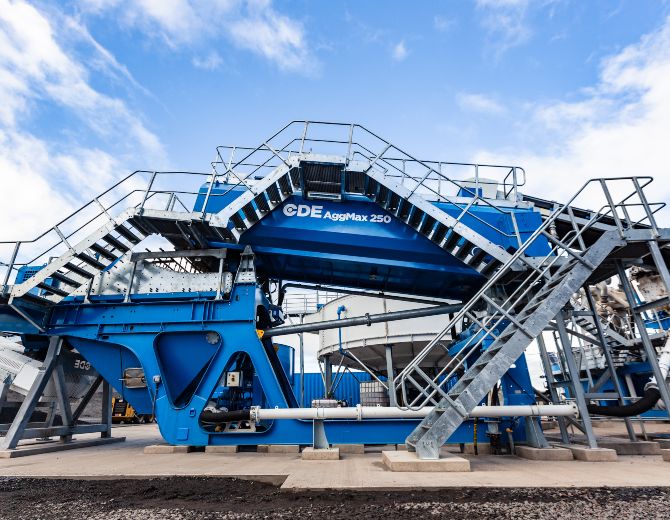
Equipment Sustainability
Back in the heady 80s and 90s our appetite for convenience started, since then its grown and infiltrated every aspect of life. We seek instant gratification; we want things without delay, and we’ve become a “throw away” society. The world has a fascination with all things disposable. A clever money generator created by the white-goods suppliers because there’s good profit in selling replacements every few years. However, I would much rather live in a world which put the Total Life Cost of the equipment back onto the manufacturer. And not just the upfront capital cost.
In this world, the right incentives would be in place for the manufacturer to provide a product that is sized and specified correctly, that is available for as much of its working life as possible, that lasts as long as possible, and requires as few spare parts as possible. I would buy that vehicle, or washing machine, or air con unit, because there would be great savings in the long term.
That’s how CDE works.
The spare parts we offer haven’t been designed with repeat revenue in mind. We’ve found that it’s better business to build for the long term, and have our customers open another site, because the first has worked so well. We design so much of the system to be naturally insulated from wear and tear, that replacement is negligible. Where that’s not possible, we design critical wear parts, like Rotomax paddles, a key component of the AggMax logwasher, to last as long as possible (without affecting their core operation). Many of our Innovation decisions are made to improve equipment longevity, particularly with our Infinity bolted, weld-free, screen range.
Suppliers into the wet processing industry are increasingly using app-based software systems to radically improve plant visibility and remote monitoring. CDE’s SmartTech suite, as an example, enables operators to shine a light on part wear tracking, plant uptime and utilisation. Access to this data enables improved servicing plans and timely parts replacement which improve plant efficiency, wear mitigation and uptime, all of which positively impacts the plants long term sustainability.
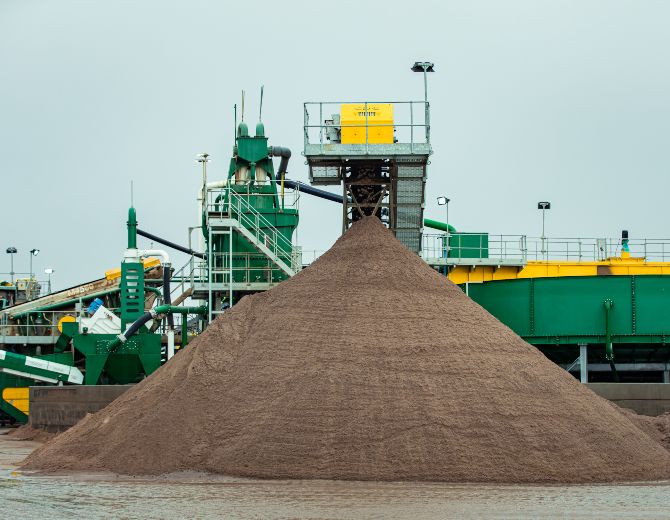
Environmental Sustainability
When I’m speaking with customers, I often asked what’s the thing they need most at the moment. The answer is usually either trucks, or truck drivers. Yet another commodity in short supply!
So, what does this have to do with Environmental Sustainability? With the trucking problem, the economic and the environmental motivations align… Not how do we get more trucks, but how do we make the trucks we have do more?
If the 20 ton of sand is what’s driving the business case, that’s where the profit contribution is coming from. So, if we can get a single truck to deliver as many 20-ton loads per shift as possible, this makes more commercial sense, and drives the greatest environmental benefits.
This can be done through localising the supply chain. CDE has pioneered the recycling of urban materials processing for the last 20 years, and in doing so, we’ve brought the supply of materials far closer to the origin of demand. With smart optimised routing, we’ve enabled that truck to deliver 20 tons of sand or aggregates multiple times. The environmental impacts this can bring are remarkable. And crucially, when you solve the economic problem, you solve the environmental one too.
Of course, not every quarry can be next door to the city, and longer truck journeys will still be needed, but we prolong the use of our most valuable natural resources by utilising high-specification recycled materials that are already available in the city limits.
Unlike finite natural resources, how we tackle environmental sustainability should be infinite. We should never stop trying to lessen our everyday personal or business impact, we should always seek to do better. I think we each take a big step forward when we work in the most efficient and local way possible. And as the difficulties and expense of travel and transportation become more apparent, the ability to bring supply and demand, and companies to service them, more local, then efficiency and environmental gains will surely follow.
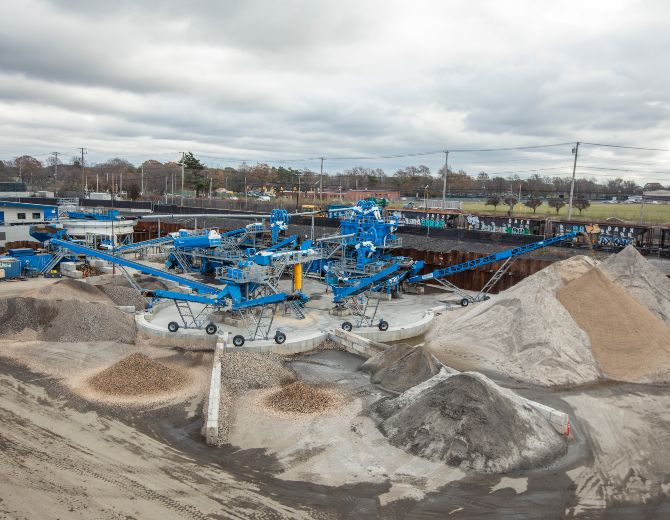
Economic Sustainability
There appears to be a reluctance to mention profitability as part of the sustainability discussion - the unethical taboo; like you somehow can’t be both profitable and environmentally responsible! However, this paradox is a myth. Rather than these being mutually exclusive, they are completely dependent on each other. The future of business will show that to be profitable you need to first be environmentally sustainable. Environmental, social, and corporate governance are increasingly influential for both finance providers and investors. Non-financial factors are weighed as part of their analysis process to identify material risks and growth opportunities.
The profitability of our customers is a fundamental part of being sustainable, otherwise none of the above can happen anyway. Fortunately, getting value from low grade resources, maximising equipment longevity, incorporating urban recycling to reduce transport costs, all makes good business sense, and so Economic Sustainability (i.e., profitability) is a happy consequence of the effective execution of the other three. Business for good is good for business.
Innovating to stay on the tightrope
CDE’s innovation roadmap is in place to help industry operators achieve this balance and stay on the sustainability tightrope.
We deal in solutions. Solutions that respond to complex environmental questions and to important commercial considerations. It is done on a few levels.
Firstly, this is achieved through the improvement and evolution of our proven solutions; making these more wear resistant, cost effective, energy & operationally efficient, and ensuring they treat height and water (within the process) as precious commodities. Whether that’s through our range of patented Infinity Screens bringing improved durability and energy efficiency to the high frequency screen market; or the use of smart software to measure power and minimise the impact to operating costs.
And secondly, taking leaps into the future with more transformational change – expanding the scale of our operating range to minimise cost per ton of processing to levels we’ve never seen or making changes to our recycling process to produce the highest output quality of washed sand and aggregate that we’ve ever achieved.
Delivering the world’s infrastructure requirements and working towards everyone having a reasonable standard of living requires a procurement strategy for the long term, and the industry supply chain working correctly, responsibly, and profitably. With a helping, guiding hand we can maintain our collective balance on the suitability tightrope. Together we can ensure that sustainability remains high up on all our agendas - not just the wish to protect the planet, but the drive to be more efficient, more local and to make our customers, our customers’ customers, and our customers’, customers’, customers more profitable, sustainable businesses for the longer term.




